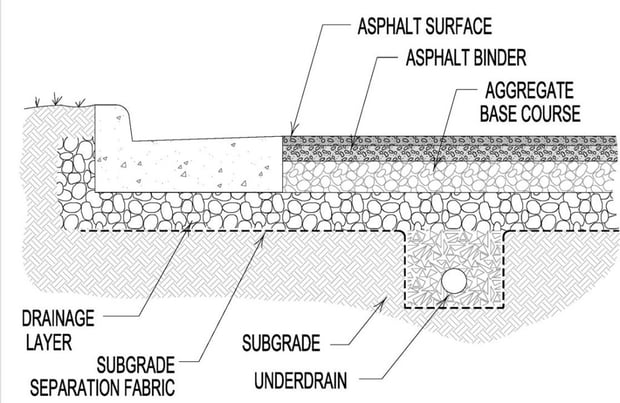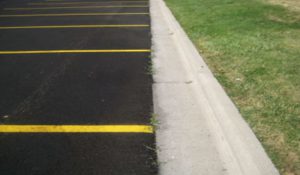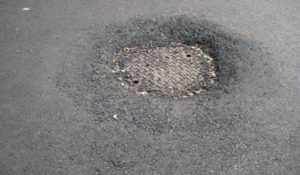by Troy Kaiser
There are a number of variables that play an important role in constructing a proper pavement. Even though the finished surface may be appealing to your eye, there are subsurface variables, design principles, and thicknesses that can affect the pavement’s longevity.
The post-construction audit of a paving project has three goals: (1) To assess the quality of the finished installation, (2) to determine if the contractor followed the specifications or proposal during installation, and (3) to determine causes for any defects and to make recommendations for repairs, extended warranties, or monetary penalties. For the sake of this article, we will briefly describe the post-construction audit process as if conducted by a professional pavement consultant.
The first phase of the audit is fairly straightforward. The consultant walks the site and assesses the visual condition and defects or omissions in the installation. Numerous photos are taken during this process, documenting any problem areas. During this part of the audit, the consultant will look for the following:
- Texture and smoothness of the surface.
- Match or butt into the existing surfaces.
- Match at utility and drainage structures.
- Surface drainage.
- Match at construction joints.
- Incidental items such as signs, bollards, and landscaping.
- Drainage structures clear of construction debris.
- Damage at any of the existing facilities.
- A clean site, ensuring all traffic control has been removed.
Vegetation between the new overlay and the existing curb, indicating poor cleaning and butt joint preparation.
The consultant will also field measure the pavements to verify the size of the completed work.
The second phase of the post-construction audit includes determining the causes for any defects found and calculations to determine if the new pavements were installed at the correct thickness. This requires information from the contractor and some research. The contractor will need to supply the dates that materials were installed and the tonnage and supplier of each material. Tonnages should be obtained for asphalt, concrete, and stone materials. The consultant will then check records for the weather conditions at the time of the installation. From this information, the experienced consultant can usually determine the most likely cause for any visual defects observed. An important part of this phase of the audit is the tonnage calculations to determine if the materials were installed per the contract specifications. By knowing the size of the paved area and the tonnage of material installed, the consultant can determine the average thickness of the finished pavement. It is important to ensure that you are getting the proper thickness of both stone base and pavement. A shortage of as little as 1/4″ of asphalt over a standard 175-car parking lot can be worth as much as $9,000. With a shortage of as little as 1/4″ of material, the structure of the pavement is not as strong as designed and could cause premature issues.

Pavement Cross-Section: If the full stone or pavement thickness is not installed, the design strength is compromised.
The final phase of the audit is the recommendations for any repairs that may be needed. These items could include, but are not limited to, areas of poor workmanship, the installation or removal of overlooked items, the cleaning of construction debris, repair of damaged property and, most importantly, the recommendations for how to handle material shortages. Material shortages can be handled in a few ways. One way would be to have the contractor overlay the area to guarantee the proper thickness; however, this may not be possible due to existing match points and the need to maintain positive drainage. The contractor could excavate the area and install the proper thickness of materials as specified, which may cause the owner more construction delays and inconvenience. The owner could hold back the dollar amount for the shorted materials and, in addition, request an extended warranty for the pavement not being installed to design strength. Any combination of these penalties could be considered.
Poor workmanship around a manhole that should have been raised.
While full-time construction management is preferred during a construction project to ensure quality workmanship and installation of asphalt and concrete pavements, post-construction audits can be a useful tool for smaller projects. While post-construction audits cannot guarantee workmanship during construction or that materials were installed per the specifications, they can be worthwhile. Ultimately, an extended warranty or credit may be nice, but keep in mind the strength and integrity of your pavement was compromised during construction. This can lead to premature failures, which could end up costing you more money down the road.
Post-Construction Audits
Items you cannot “inspect” in the post-construction audit without destructive testing include:
- Underdrain Install and Quality
- Subgrade Condition
- Aggregate Base Compaction
- Hot Mix Asphalt
- Rebars and Dowels in Concrete Pavement
- Proper Installation of the Tack Coat


